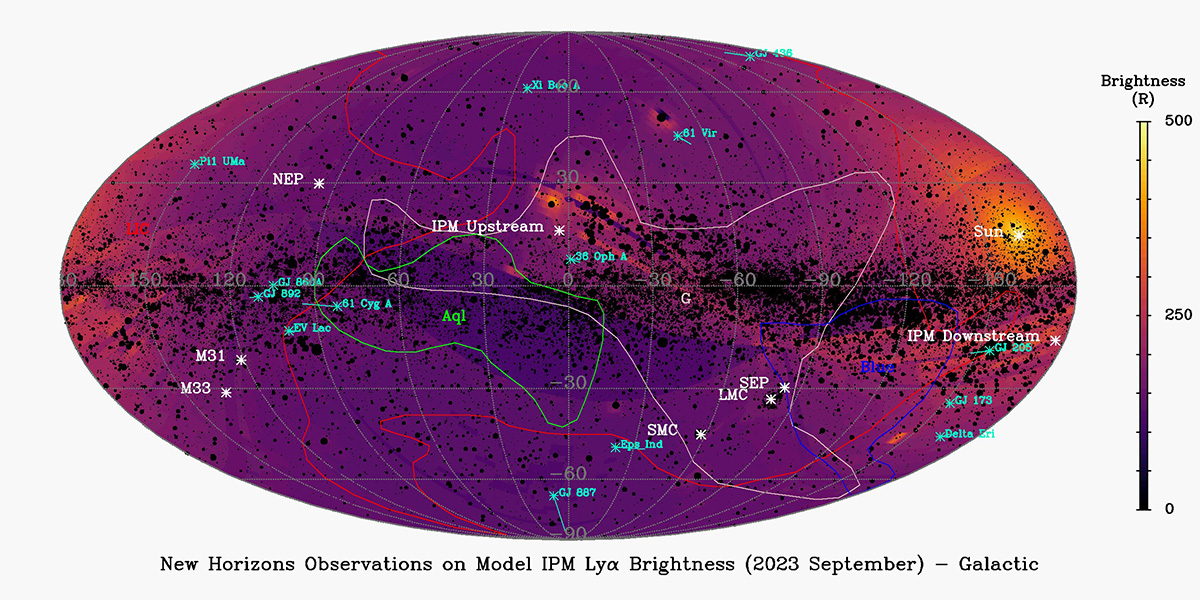Background
The second NASA New Horizons (NH) extended mission (KEM-2) uses the NH spacecraft for three scientific disciplines: planetary science, heliophysics, and astrophysics. The KEM-2 astrophysics observations include Cosmic Optical Background (COB) Mapping, Cosmic UV Background (CUVB) mapping, and Local Interstellar Medium (LISM) UV mapping. NASA funding for KEM-2 did not include funds for analyzing astrophysics data.
Approach
This Presidential Discretion Internal Research (PDIR) project is to reduce and analyze the astrophysical KEM-2 data acquired by the SwRI-built Alice instrument on NH for the latter two of the above categories (i.e., LISM and CUVB mapping), with the intent of proposing new work to various grant programs in these areas once we have established publications in refereed journals.

Figure 1: All-sky Lyα maps derived from the New Horizons Alice analog count rates.The Mollweide projection map is in Galactic coordinates, centered on (l,b) = (0,0), and shows Alice brightnesses (except for the 30º swath containing the Sun, which shows a hot model prediction of the backscattered solar Lyα plus a 50-R value meant to represent the Galactic Lyα signal. The ~90,000 stars in the Velez et al. (2024) catalog are overlaid as black dots, with dot size proportional to the logarithm of the expected count rate from each star. The outlines of four important local interstellar medium clouds (‘LIC’, ‘Aql', ‘Blue', and ‘G') are shown, as described in Redfield & Linsky (2008). The locations of 14 fast-moving stars from Shull & Kulkarni (2023) are indicated by purple asterisks, with lines pointing toward their expected locations in 10,000 years. The map also indicates the ecliptic poles, the upstream and downstream directions of the flow of interstellar H through the solar system, and the Sun.
Accomplishments
The LISM mapping is complete; data were retrieved and reduced, many Lyman-alpha (Lyα) maps were made (see example above) and compared with known LISM structures. This is the first detailed all-sky map of Lyα emission observed from the outer solar system, where the Galactic and solar contributions to the observed brightness are comparable, and the solar contribution can be reasonably removed. Our results show that the overall average brightness level of the Lyα emission can be explained as largely due to early-type stars and hot gas shining on and ionizing the hydrogen of the interior walls of the Local Hot Bubble surrounding the Sun.
These results were written in a draft paper to be submitted to The Astronomical Journal, and an abstract was submitted for a presentation to the next meeting of the American Astronomical Society (AAS) in January 2025.

